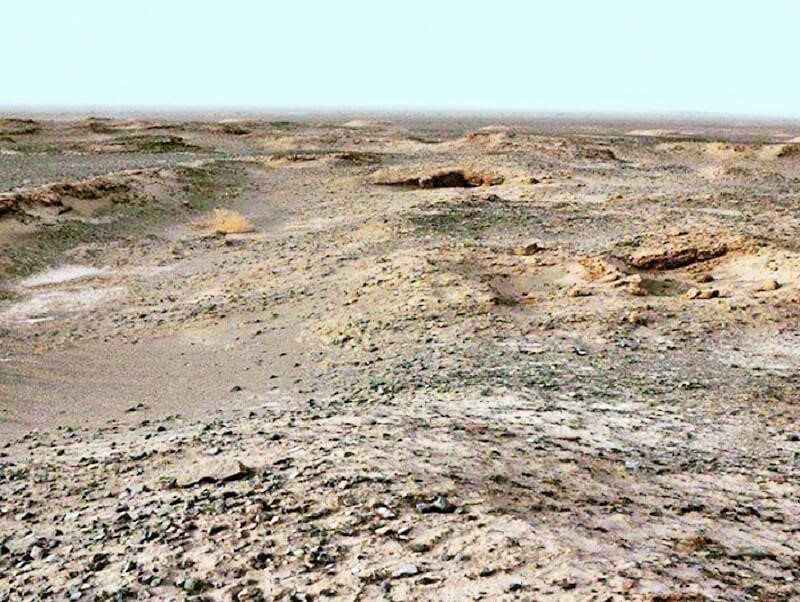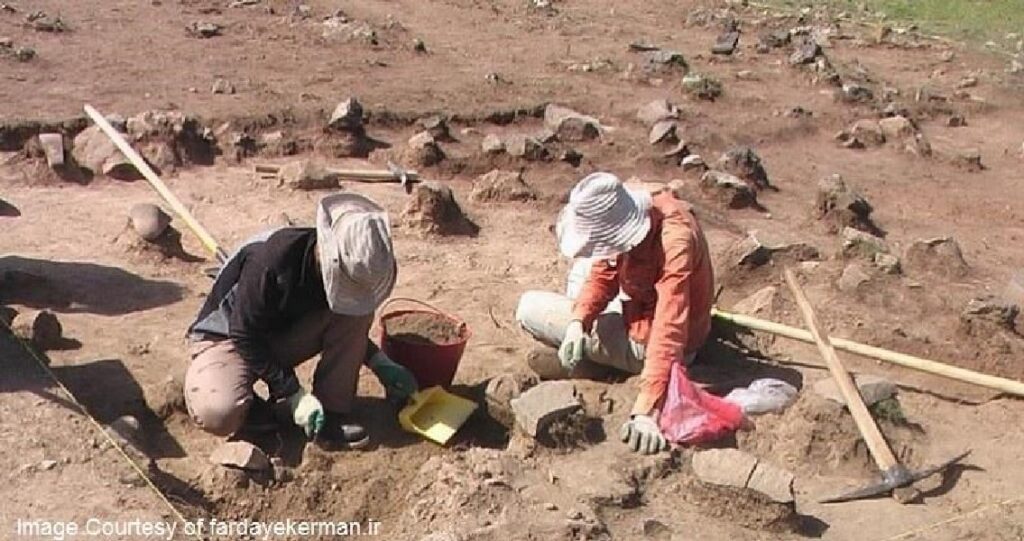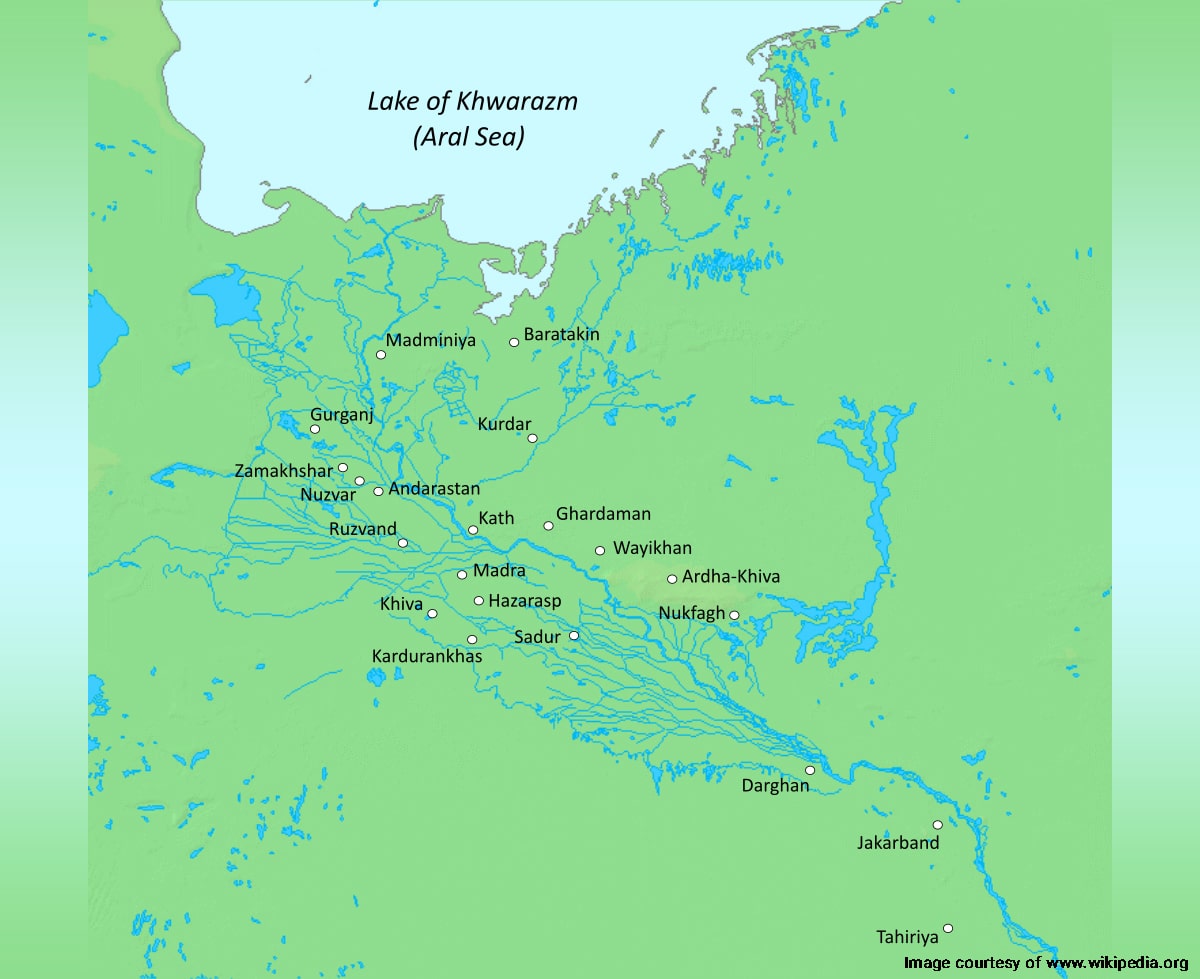
Tal-e Atashin in Darestan is a historical mound near Bam, 30 km east of the Bam Citadel (the largest adobe structure in the world). Also known as Tal-e Atashi (fire mound), it is located in Darestan village, which is related to the Pre-Pottery Neolithic (Late Stone Age or the first agricultural revolution). This hill is considered one of the oldest Bam tourist attractions.
The pre-pottery Neolithic era is a prehistoric period of human civilization when sedentism became common and people had just started to practice animal husbandry and agriculture. However, pottery crafts were not common during this period.
Archaeologists attribute the beginning of the Neolithic period to 12,000 years ago in the Fertile Crescent (modern-day Iraq, Jordan, Lebanon, Palestine, and Syria, northern Kuwait, south-eastern Turkey, and Iran). This period ends with the beginning of the Copper Age or Chalcolithic Age (about 6500 years ago). Therefore, studying these ancient sites reveals the lifestyle of our ancestors who lived on earth thousands of years ago. This historical monument was registered in the Iran National Heritage List in 2001.
Archeological Studies on Tal-e Atashin in Darestan

For the first time, this mound was studied by Professor Ahmed Mostofi, the father of Geomorphology in Iran. However, most of the Tal-e Atashin archeological studies were carried out by Dr. Omran Garazhian. During these archaeological excavations, many artifacts were discovered in this historical site, including adobe houses, metal tools, stone tools, and clay figurines.
Among the very interesting discoveries in this mound, we can mention the half-burnt kernel of a date fruit. This discovery means that this tree was most likely cultivated in the city of Bam around 3500 BCE.
Based on the studies on the discovered artifacts, archaeologists realized most of their raw materials were acquired from the mineral reserves south of Kuh-e Kabud near Darstan. This shows that people living in this village discovered this area during their migration from west to east. Then, this civilization was established in the Tal-e Atashin in Darstan, Bam.
At any rate, all the archeological findings from this site show that a population settled there a very long time ago. The presence of this culture in the mound is estimated to date back to the pre-pottery Neolithic period and later, the Bronze Age (urbanization). The presence of adobe houses in this place is proof of this claim.
Evidence also suggests that after some time, Tal-e Atashin was abandoned. Then, the civilization which was formed over many years became extinct. Factors such as disease, war, natural disasters, and climate change may have caused the population to reconsider this place as their permanent residence.
The Formation of Civilization Near Posht Rud (River)
As you know, most early civilizations formed along river banks and areas with access to water. The Darestan civilization too formed on the banks of the “Posht Rud” river near Bam.
The flow of this river starts at the heights of Rayen (northwest of Bam), passing Bam City, where it is called “Tahrud”. Then, after passing through the Bam, it is named Posht Rud. The said river passes through different villages, including Darestan village, and finally, it reaches the Lut Desert.
In the past, Posht Rud was a perennial river, meaning the river flow was stable throughout the year. Today, due to the digging of aqueducts and various wells along its course, the current dries up in some seasons of the year. Therefore, in recent years, the said river has turned into an intermittent river. Nevertheless, the water reserve for the aquifers of Bam City is still supplied through this river.
Architectural Features of Tal-e Atashin Houses
All the buildings in this village are square and L-shaped. The materials used in their construction were clay and stone, and reeds were used to cover the roofs.
It seems that the buildings had two stories in the past. The first floor of the building was used as a storage area and the second floor was used for residence.
Since there are no entrances to these houses, it is assumed that the residents entered through the roof. In the interior of these houses, small ovens were integrated into the wall.
Visit Tal-e Arashin in Darestan Village
It is always interesting to learn more about ancient history and the people who lived long before us. Tal-e Atashin in Darestan village is one of the historical sites to provide the possibility of studying and visiting ancient remains of past civilizations. Every year, domestic and international travelers visit Darestan village to visit this ancient mound.
If you are also interested in heritage tourism and visiting ancient sites, you can start your trip with an Iran tour package. Destination Iran aims to introduce Bam tourist attractions and other Kerman top sights and invites you to visit Tal-e Atashin in Darestan, Bam.
Where is Tal-e Atashin in Darestan?
This ancient mound is located in Darestan village, 35 km from Bam city in Kerman province. Below you can see the location of Darestan village, near this hill:
Frequently Asked Questions About Tal-e Atashin in Darestan
If you did not find the answer to your question here, leave us a comment in the comment section below this post and ask your question. We will answer it as soon as possible.
To which prehistoric period do the ancient artifacts of Tal-e Atashin belong?
Based on radiocarbon dating findings, it appears that they belong to the pre-pottery Neolithic period, and from this period to the Bronze Age and the spread of urbanization, this place was a human settlement.
When did the first archeological research on Tal-e Atashin begin?
Research and archeological excavation in the ancient site of Tal-e Atashin in Darestan began in the 1970s.
What artifacts and historical remains have been discovered in Tal-e Atashin?
Adobe houses, metal tools, stone tools, and clay figurines have been discovered in this ancient mound. An interesting discovery was the half-burnt kernel of a date, which can be a sign of the cultivation of date trees in this area at that time.













